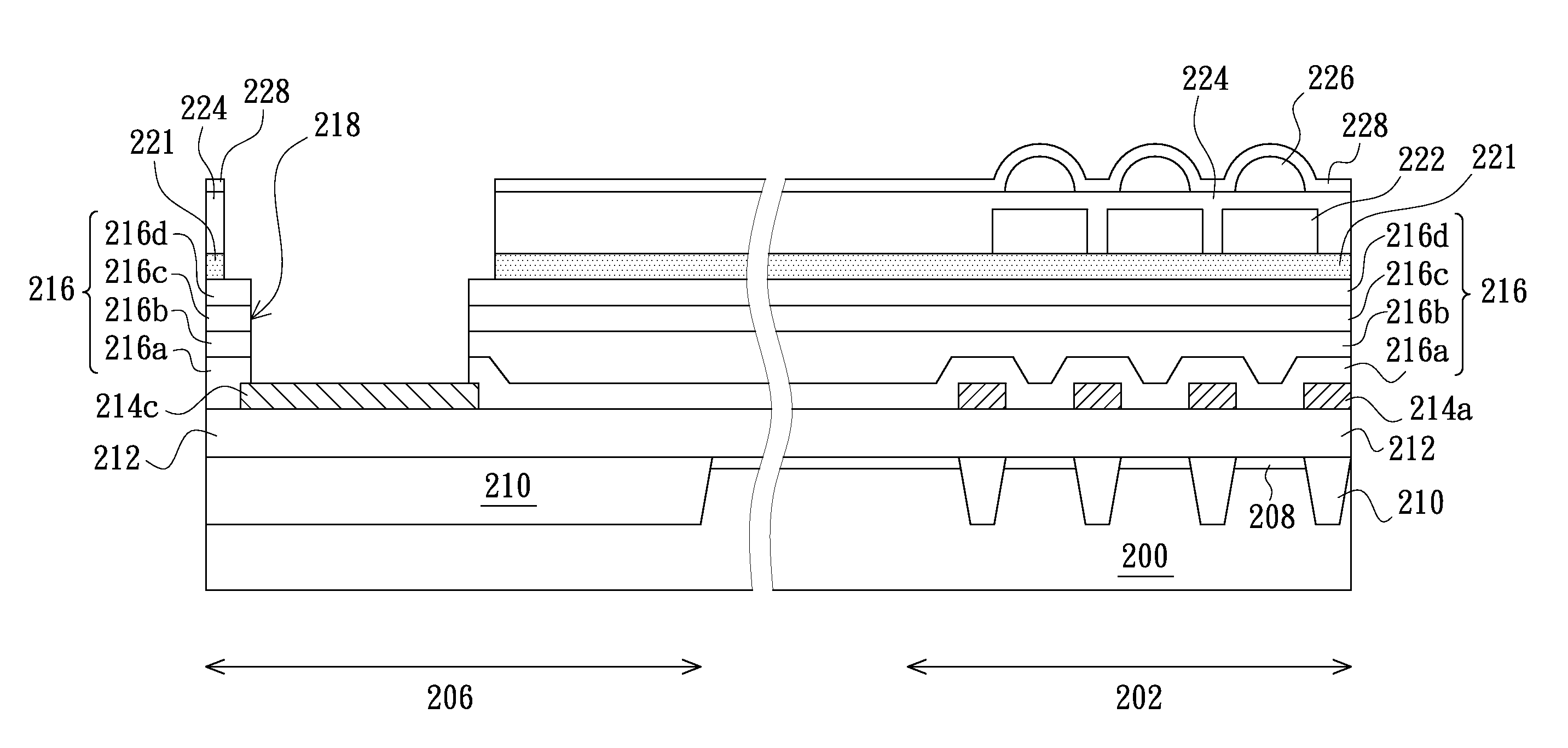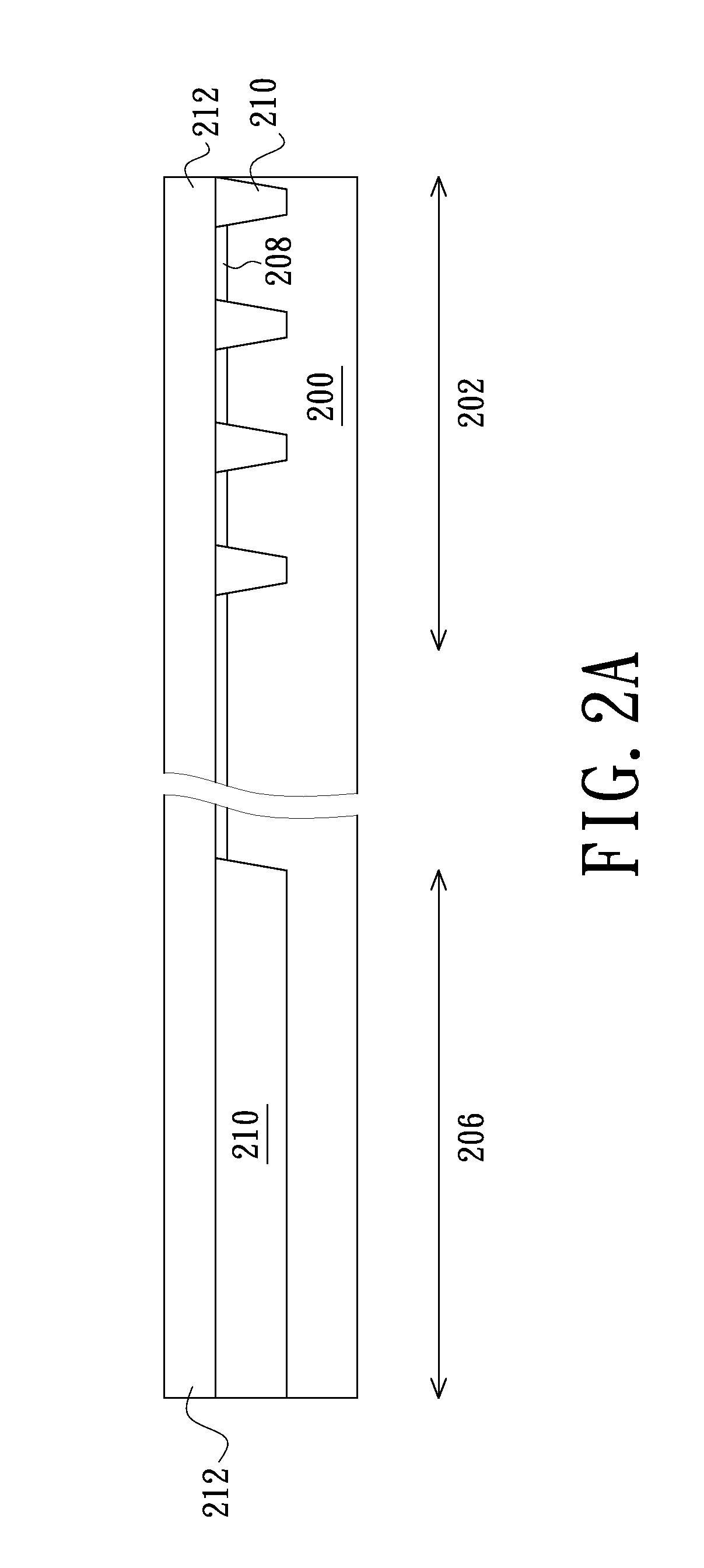Method of fabricating image sensor and reworking method thereof
a technology of image sensor and reworking method, which is applied in the manufacture of semiconductor/solid-state devices, semiconductor devices, electrical devices, etc., can solve the problems of low product yield, high product cost, and inability to completely remove the capping layer 130/b>, and achieve the effect of reducing the photo lithography process, enhancing product yield, and relatively simple fabrication process
- Summary
- Abstract
- Description
- Claims
- Application Information
AI Technical Summary
Benefits of technology
Problems solved by technology
Method used
Image
Examples
Embodiment Construction
[0031]FIGS. 2A to 2F are schematic, side cross-sectional view of an image sensor according to an embodiment of the present invention, when the image sensor is fabricated.
[0032]Firstly, referring to FIG. 2A, a substrate 200 is provided. The substrate 200 can be a semiconductor substrate. The substrate 200 having a pixel array region 202 and a pad region 206. A photo sensing unit array and a plurality of isolation structures 210 are formed the substrate 200. The photo sensing unit array is made of a plurality of photo sensing units 208. The isolation structures 210 are used to isolate the photo sensing units 208. The isolation structures 210 can be shallow trench isolation structures.
[0033]Next, a metal interconnect structure and a plurality of inter-layer dielectric layers 212 is formed on the substrate 200 to cover the photo sensing units 208. The metal interconnect structure and a plurality of inter-layer dielectric layers 212 can be made by a metal etching process, a dielectric de...
PUM
 Login to View More
Login to View More Abstract
Description
Claims
Application Information
 Login to View More
Login to View More - R&D
- Intellectual Property
- Life Sciences
- Materials
- Tech Scout
- Unparalleled Data Quality
- Higher Quality Content
- 60% Fewer Hallucinations
Browse by: Latest US Patents, China's latest patents, Technical Efficacy Thesaurus, Application Domain, Technology Topic, Popular Technical Reports.
© 2025 PatSnap. All rights reserved.Legal|Privacy policy|Modern Slavery Act Transparency Statement|Sitemap|About US| Contact US: help@patsnap.com



